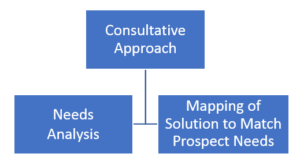
Thursday, May 3, 2018
 “The more a person feels understood, and positively affirmed in that understanding, the more likely that urge for constructive behavior will take hold.”
“The more a person feels understood, and positively affirmed in that understanding, the more likely that urge for constructive behavior will take hold.”
Chris Voss, former lead international kidnapping negotiator for the FBI, knows a thing or two about changing behavior. In his book Never Split the Difference, Voss instructs the reader how to execute a number of his signature negotiation tactics.
Among stories of haggling with terrorists, kidnappers, and even Harvard professors, Voss also brings his strategies to the business world and explains ways business people can change the behavior of the party they are negotiating against. One important step in convincing someone to change their behavior (such as switching from not needing your product / service to buying it) is having the other party feel like their needs are being understood and valued.
In the sales world, understanding needs is a critical element of what is known as the consultative approach. What is the consultative approach exactly? Think of it as the articulation of how a proposed solution will fill the prospect’s unique business requirements. And in order to successfully map a solution to the prospect’s needs, an effective needs analysis first needs to take place.
Across Anova’s win / loss research, consultative approach is one of the leading indicators of a successful sale. In fact, in one recent study, the client’s win prospects cited consultative approach as the number one strength of the sales team. But in losses, the number one area for improvement was the lack of a consultative approach.
So what does that mean?
For one, it means the client’s sales team was inconsistent in their execution of the approach. But secondly, it means that the data reinforced the notion that a well-executed consultative approach puts the sales team in a very good position to close the deal. If the sales team was able to effectively complete the needs assessment and map their solution to the prospect’s needs, it most likely ended in a win. Conversely, if they were not able to complete those steps, the client was more likely to lose the deal.
So how can sales teams learn to be more consistent in their execution of the consultative approach? Let’s look at one anecdote Voss detailed in his book involving a pupil of his who was trying to close a substantial deal as a sales representative for a large pharmaceutical company.
Voss’s student had had numerous appointments with a hospital trying to sell a doctor a new kind of medication. However, each meeting ended the same way, with the doctor ignoring the salesperson’s pitch and dismissing the product.
Eventually, the student tried a different tactic. Instead of trying to pitch the new medication right off the bat, she started a meeting with a needs assessment.
“They talked about specific challenges [the doctor] had… [The salesperson] learned how her medication would fit into [the doctor’s] practice. She then paraphrased what he said about the challenges of his practice and reflected them back to him.” The salesperson eventually “could tout the attributes of her product and describe precisely how it would help [the doctor] reach the outcomes he desired… She made the sale.”
The salesperson was finally able to successfully close the deal, but only after committing the time to learning about her counterpart and what the customer was trying to accomplish. Voss’s story exemplifies how effective a well-executed consultative approach can be in turning even the stingiest of prospects into a satisfied buyer.
For salespeople in any industry, being able to execute the consultative approach is vital to closing deals. Remember to commit to the needs analysis, as making the prospect feel understood is the important first step in changing their behavior from evaluator to buyer.